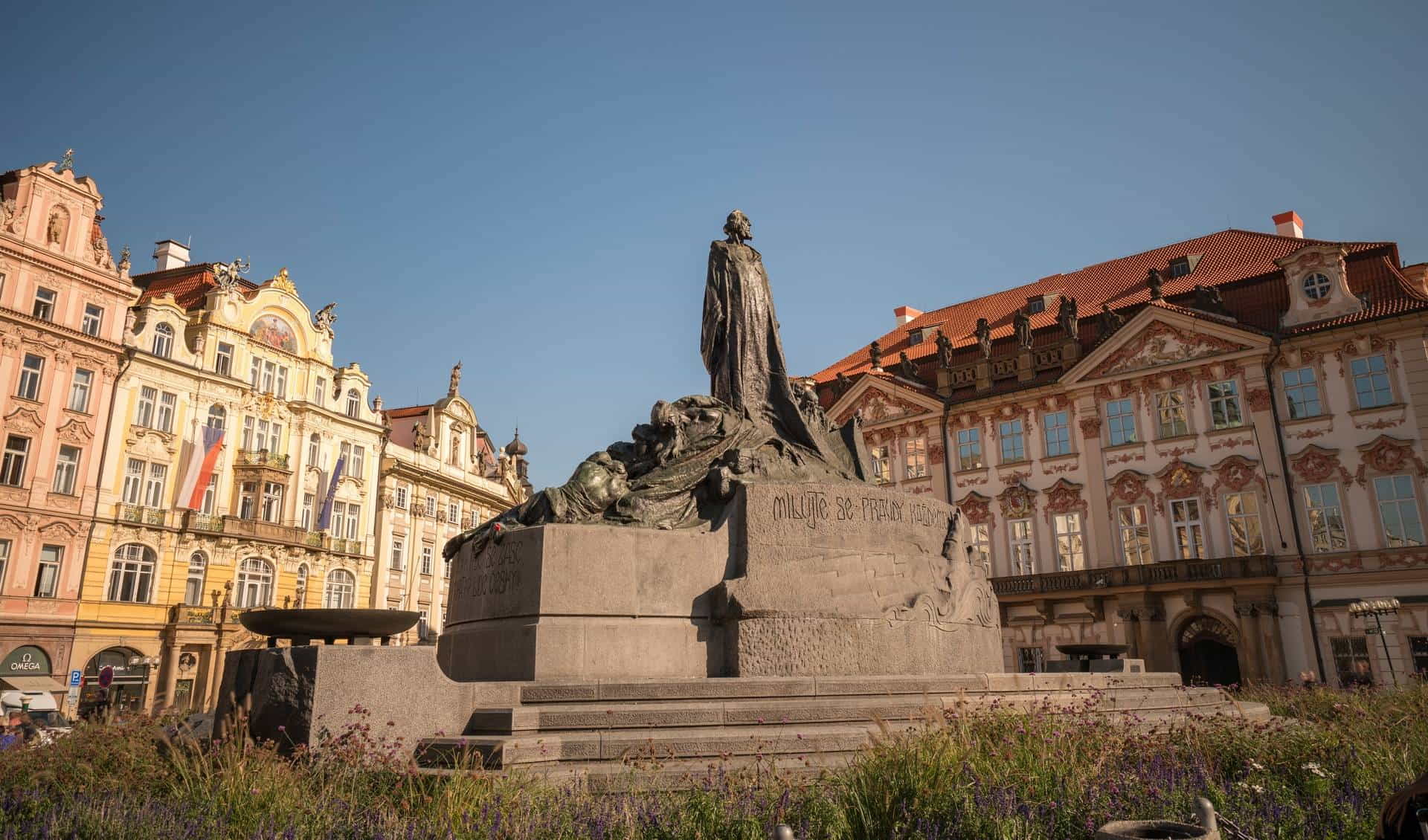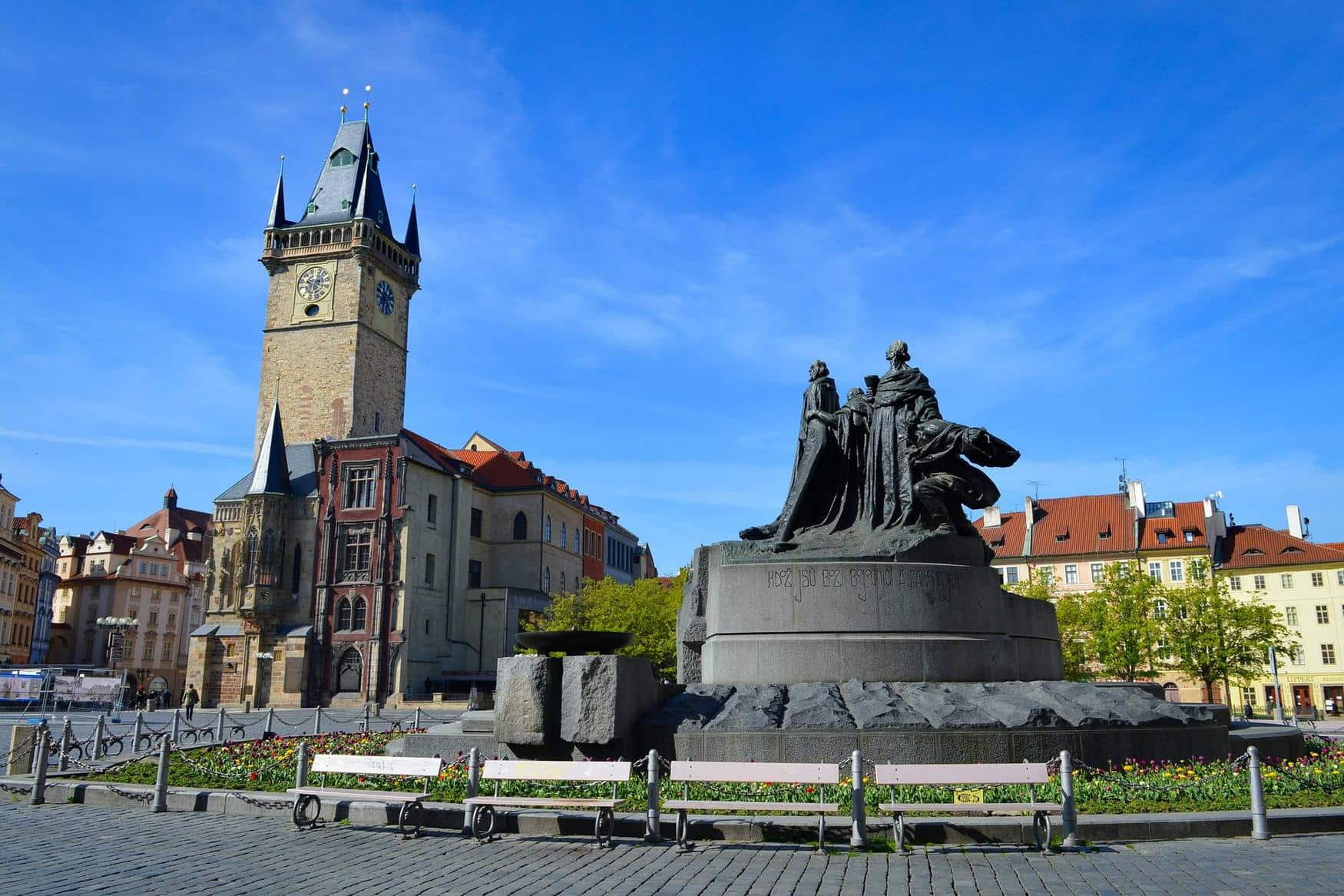Standing proudly in the heart of Prague's Old Town Square, the Jan Hus Monument is a grand sight and a significant emblem of Czech national pride. Pay homage to a pivotal historical figure, Jan Hus, a forerunner of the Protestant Reformation who met a martyr's death in 1415. This monumental statue captures the eyes of visitors, young and old, as it powerfully symbolizes a legacy of religious reform and the long struggle for Czech independence.
For families exploring the cobbled stones of Prague, the Jan Hus Monument (Pomník Mistra Jana Husa) offers a captivating lesson in history with impressive artistry. Crafted by sculptor Ladislav Šaloun and unveiled in 1915 to mark the 500th anniversary of Hus's death, the sculpture stands as a testament to the influence of Hus's teachings, which resonated centuries after his passing. The surrounding Old Town Square, with its blend of Gothic and baroque architecture, forms a storybook backdrop to this imposing figure, ensuring that visiting here will spark children's curiosity and provide a compelling chapter in their travel adventures.
Contents
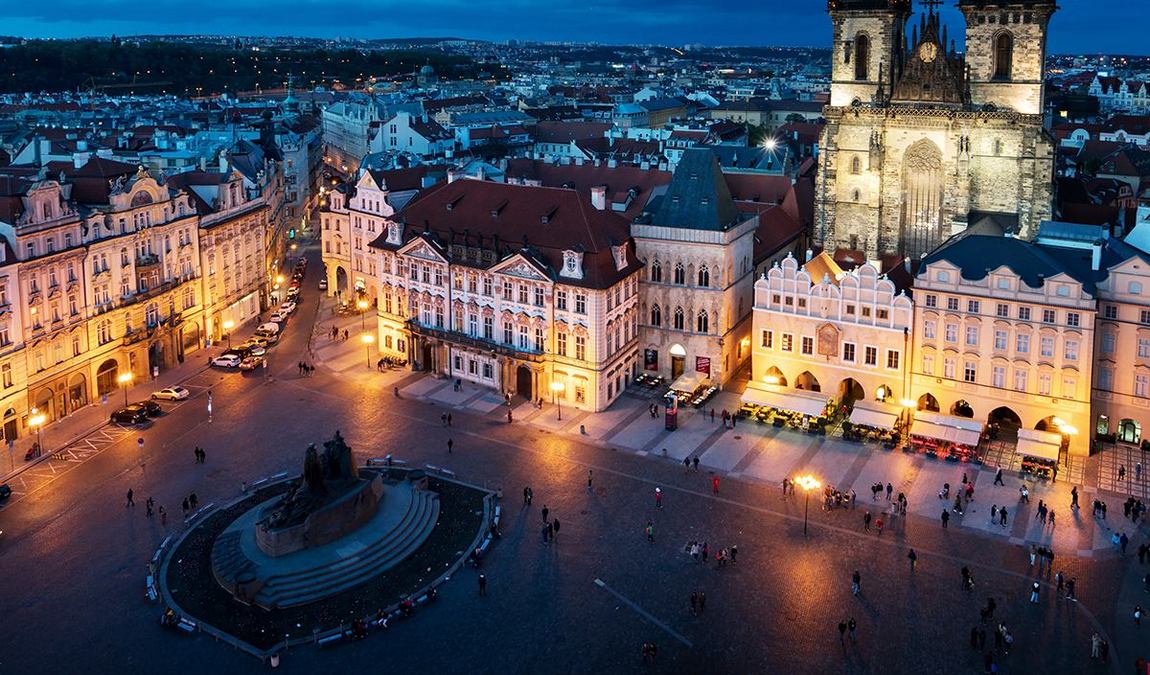 Photo: facebook.com/prague.eu
Photo: facebook.com/prague.eu
Here is Why Your Kids Will Find it Interesting
The Jan Hus Monument is an intriguing piece of history in Prague's Old Town Square. Here are three compelling reasons why Jan Hus Monument is worth visiting with kids:
- Heroic Tales: The monument celebrates Jan Hus, a historical figure who stood up for his beliefs. Kids who enjoy stories of heroes and bravery can learn about Hus's influence and the significant movements he inspired.
- Impressive Sculpture: Children are often drawn to grand structures and sculptures. The size and scale of the monument can be awe-inspiring, offering a tangible connection to the past.
- Cultural Significance: Understanding the importance of this monument helps kids connect with Czech history, nurturing a sense of global citizenship.
Children aged 10 and older will likely find the Jan Hus Monument fascinating. At this age, they begin to appreciate the more complex stories behind historical figures and can understand the ideals of standing up for one's beliefs.
The monument can also spark conversations about history and encourage kids to think about the values represented in public art. It underscores the impact of one person's actions on history — Jan Hus being a prime example — who challenged the status quo and inspired future generations. The sculpture embodies tales of courage, cultural rebirth, and the long-lasting effects of historical events, all of which can be compelling points of interest for young, curious minds.
Historical Context
 Photo: pixabay.com
Photo: pixabay.com
The Jan Hus Monument is a testament to the profound impact of one man's life on the Czech nation and its spiritual heritage. It commemorates not only a religious thinker but also a national symbol of independence and rebirth.
Jan Hus was born in Bohemia, now part of the Czech Republic, around 1372. He emerged as a significant religious reformer, philosopher, and advocate against corruption within the Catholic Church. Hus criticized the Church's practices, which eventually led to his excommunication and eventual martyrdom.
Following Hus's death, his teachings ignited the Hussite movement, a pre-Protestant Christian reform group that spurred the Hussite Wars. These wars were a series of conflicts against the Catholic Church and feudal lords, reflecting Bohemia's struggle for religious and national independence.
The Council of Constance was partly convened to address the crisis within the Church caused by Hus's growing influence. However, in 1415, Hus was condemned as a heretic and burned at stake, his death cementing his status as a martyr in the eyes of his followers.
Jan Hus's death had far-reaching implications for Czech history and the notion of Czechoslovakia's quest for sovereignty. His memory served as an icon of resistance and national rebirth, especially during periods of foreign dominance, including under communist rule.
As a pivotal religious reformer, Hus's ideas predated and influenced Martin Luther and the Protestant movement. His critique of church practices laid the foundation for protesting the Catholic Church's authority, garnering significance across Europe well beyond the medieval period.
The Jan Hus Monument encompasses these rich historical narratives, inviting families to ponder the enduring legacy of a man who shaped not just Czech religious thought but its very identity.
Jan Hus Monument Details
The Jan Hus Monument, a significant symbol of Czech national identity and a key fixture of Prague's Old Town Square is a testament to the eponymous historical figure's impact. Its design reflects the Art Nouveau ethos and embeds profound symbolism, honoring a man whose life and message still resonate today.
Design and Symbolism
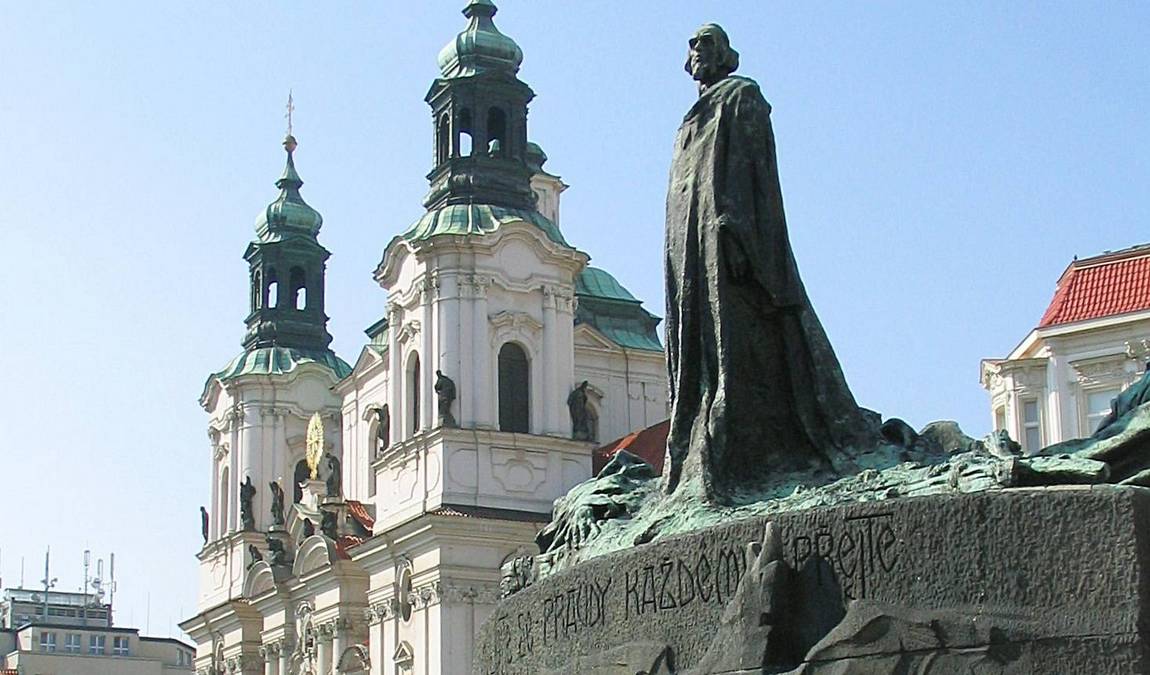 Photo: pixabay.com
Photo: pixabay.com
The Jan Hus Monument, conceived by Ladislav Šaloun, epitomizes Art Nouveau design, marrying vivid artistic detail with historical depth. The memorial not only commemorates Jan Hus, a pivotal figure in the Czech Reformation movement, but also presents a tableau of figures illustrating the concept of "love each other" and portrays warriors of God and His law. Each element represents the enduring values Hus championed before he was burnt at the stake.
Key Features
 Photo: prague.eu
Photo: prague.eu
Central to the monument is the statue of Jan Hus, looking towards the Church of Our Lady before Tyn, reflecting his intrinsic link to Prague's history. Enshrined on the 500th anniversary of Jan Hus' martyrdom, the foundation stone reflects the collective memory and respect for his exile and relentless pursuit of religious reform.
The monumental sculpture portrays triumphant Hussite warriors and Protestants who faced exile two centuries following Hus, following the defeat at the Battle of the White Mountain during the Thirty Years' War, alongside a young mother symbolizing national rejuvenation.
Ceremonies and Anniversaries
The monument has been a focal point for many gatherings, especially for commemorating significant anniversaries related to Jan Hus. Visitors to Old Town Square often witness floral tributes and solemn respects paid by Czech citizens, indicating the monument's enduring significance within the cultural fabric of Prague. Every year, on July 6th, the anniversary of Hus's martyrdom, the memorial becomes a place of reflection and appreciation for his legacy.
Impact and Legacy
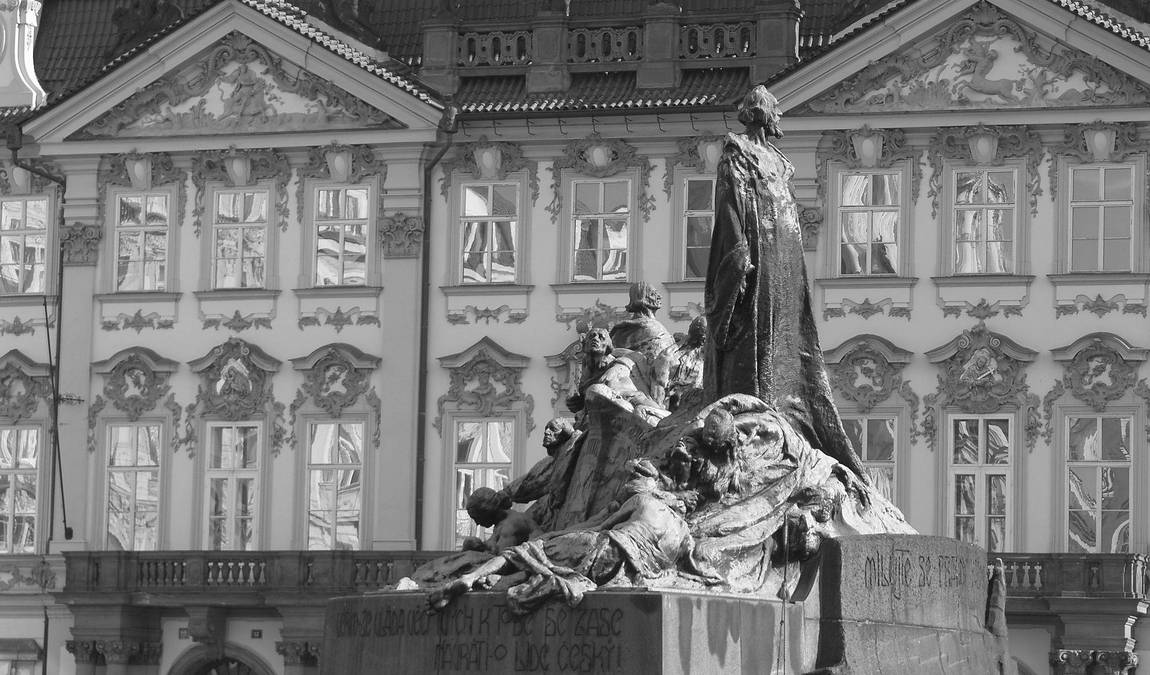 Photo: pixabay.com
Photo: pixabay.com
The Jan Hus Monument transcends mere stone and bronze, embodying Czech national identity and culture while profoundly connecting with European reformers' lineage. Positioned in the heart of Prague, this historic sculpture represents a touchstone for the Czech Republic's past struggles and triumphs, resonating with both Czechs and visitors alike.
Influence on Czech Identity
 Photo: prague.eu
Photo: prague.eu
The monument situates Jan Hus as pivotal in forming the Czech national consciousness. Standing prominently in the Old Town Square, it acts as a beacon of the enduring spirit of the Czech people who, stemming from Husinec, South Bohemia, have always valued their culture and independence. Hus's devotion and sacrifice mirror the national character, inspiring future generations.
Role in Art and Culture
Art Nouveau, at its core, this monument marks a revolution in Czech artistic expression. The work of Šaloun captures the expressive power of such a creative movement. Visitors are often in awe of the sculpture's intricate detail and evocative symbolism. It's a fixture in the historic ambiance of Prague, reflecting the city's rich tapestry of creative and intellectual heritage.
Connection to Other Reformers
An intellectual descendant of John Wycliffe, Jan Hus also foreshadowed later reformers like Martin Luther, John Calvin, and Huldrych Zwingli. His memorial directly links to the transformative wave across Europe, reminding families visiting from around the globe of the profound repercussions of Hus's teachings. The Bethlehem Chapel, where Hus once preached, still stands as a testament to this connection.
Post-Communist Revitalization
After decades under communist rule, the Czech Republic embraced its independence with renewed vigor. The memorial has witnessed this transformation, symbolizing the revitalization of a nation. As a result, it stands not only as a piece of history but also as an emblem of the Czech Republic's ongoing journey toward freedom and self-expression.
Best Time to Visit
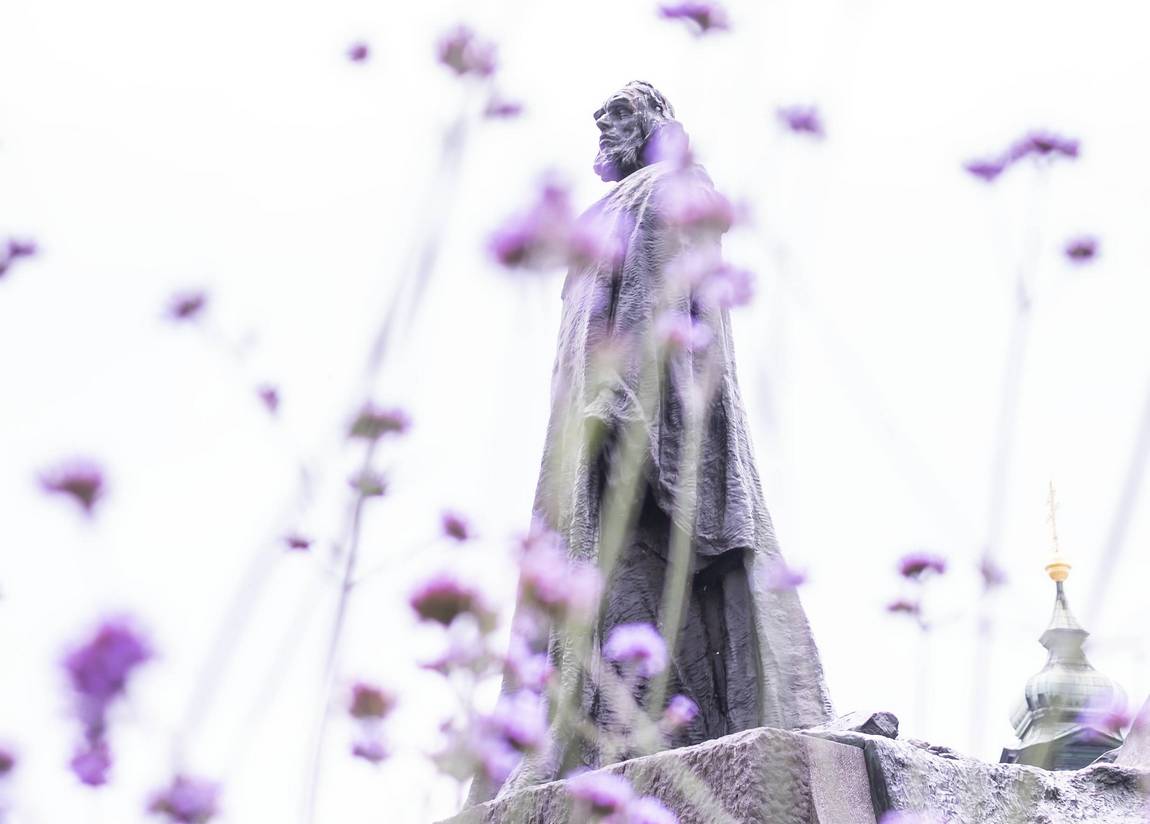
Photo: pxhere.com
Visiting the significant Jan Hus Monument in Prague's historic Old Town Square can be a delightful experience for families looking to enrich their children's understanding of European history. To ensure a harmonious trip, timing is critical.
Spring (April to June) and Autumn (September to October) are the optimal seasons to visit. During these months, the weather is mild, and the square is less crowded, allowing families to navigate and view the monument easily. Visitors during these seasons enjoy comfortable conditions for exploring the outdoors.
Weekday mornings are often the best times to visit the Jan Hus Monument with kids. The area is quieter, making it easier for children to move around and for parents to keep an eye on them, especially considering the spaciousness of Old Town Square.
Here is a quick guide on when to visit:
- Seasons: Spring (April to June) and Autumn (September to October)
- Days: Weekdays are preferable
- Time of Day: Mornings, ideally before 11 AM
While weekends and afternoons often see increased foot traffic, young ones might enjoy the buzz of local performers who often entertain during these times.
In sum, on weekdays, temperate spring and autumn mornings are recommended for family visits to balance educational content with comfort. This provides an atmosphere conducive to learning without the hustle and bustle of peak tourist hours.
How Long Does It Take to Attend?
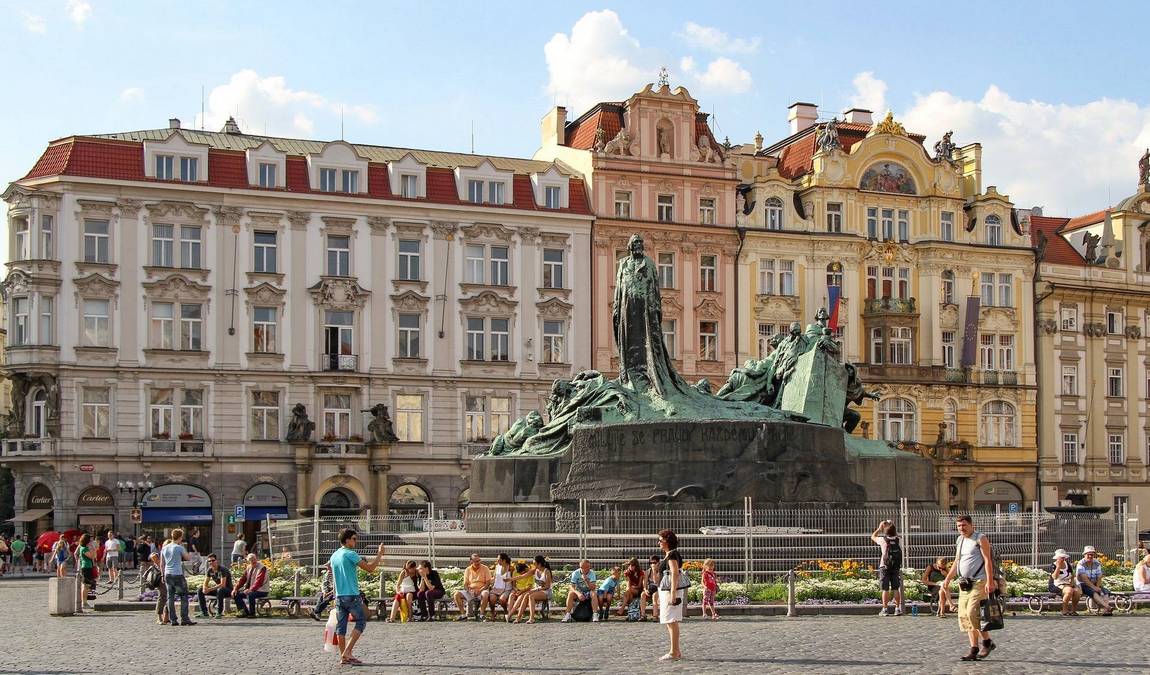 Photo: pixabay.com
Photo: pixabay.com
Visiting the iconic Jan Hus Monument in the heart of Prague's Old Town Square is an experience that families can comfortably enjoy within a short time frame. Typically, one can expect to spend about 30 to 45 minutes at the monument, making it an ideal outing that is both educational and manageable for children.
Understanding the Monument:
- Allow 10-15 minutes
- Read the inscriptions
- Observe the sculpture's details
Photography: Approximately 5-10 minutes
- Capture family photos
Reflection and Discussion: 10-20 minutes
- Discuss the history and symbolism with the kids
The duration can vary depending on interest and crowd sizes, but these estimates serve as a general guide. Visitors with a keen interest in history may spend longer soaking in the details and significance of the monument dedicated to a notable figure in Czech history.
For families, incorporating a visit to Prague's Old Town Square into the itinerary presents a perfect opportunity to introduce children to central European history tangibly and memorably. The monument itself celebrates the life of Jan Hus, a pioneering church reformer. It is surrounded by rich Gothic and Baroque architecture that will captivate visitors of all ages.
Remember, the best times to visit are either early morning or later in the afternoon to avoid the peak tourist hours, ensuring a more relaxed and intimate viewing of the monument.
Is Jan Hus Monument Worth Visiting?
For families touring Prague, the Jan Hus Monument is a significant cultural and historical landmark that merits a visit. Nestled in the charming Old Town Square, this monument offers a glimpse into Bohemian history and serves as an engaging and educational point of interest for visitors of all ages.
The monument represents Jan Hus, a key figure in the Czech national and religious reform movement, and his ideals of resisting oppression. Erected in an intricate Art Nouveau style, the monument captures the attention of both children and adults with its daunting size and expressive detail. It serves as a living history lesson in stone and bronze.
Accessibility is a key factor that facilitates family visits; the monument's location in the city's heart makes it a convenient stop, among other attractions. Its proximity to nearby cafes and shops means families can rest before or after their visit, ensuring a relaxed and enjoyable experience for parents and children.
Jan Hus Monument is worth visiting for its interactive way of teaching history, captivating architecture, and the vibrant atmosphere of the Old Town Square. Families can appreciate the monument's artistry, while parents can discuss its historical context with their children.
This venue is incredibly accommodating for families, with plenty of open space for kids to wander nearby under their parents' watchful eyes. The larger-than-life sculptures are Instagram-worthy and educational, which can spark kids' interest in history and art.
Should families decide to visit the Jan Hus Monument, they will immerse themselves in an experience combining learning, outdoor exploring, and the chance to create lasting memories against Prague's historical panorama. It is a site that pays homage to a local hero and enchants those who stand before it to ponder the stories of the past.


